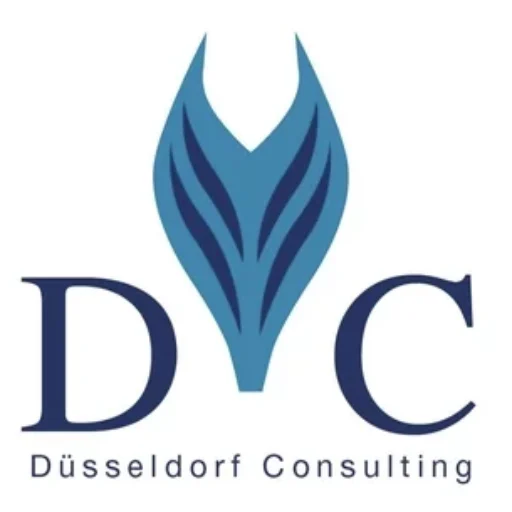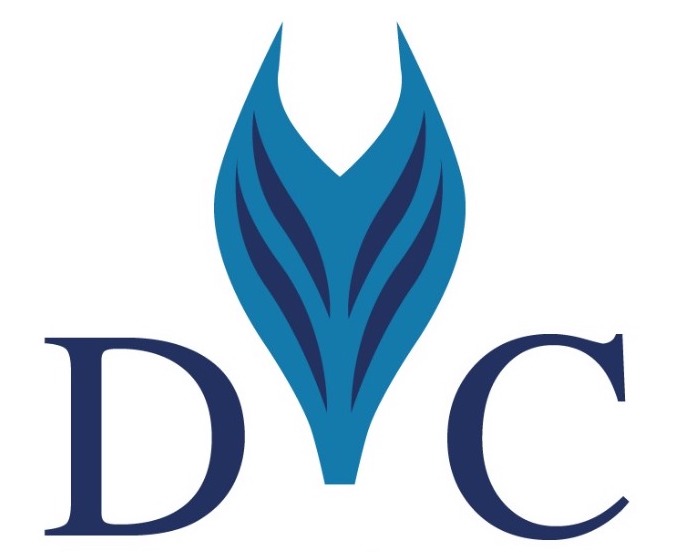The German PPP market has undergone significant changes, driven by the need for efficient infrastructure projects. Düsseldorf Consulting GmbH, a renowned consulting firm based at Königsallee 22, 40212 Düsseldorf, emphasizes the importance of effective collaborations between the public and private sectors.
As reflected in their motto, “ACTA NON VERBA !” or “Deeds, not words,” the focus is on achieving tangible results. The role of Public-Private Partnerships is crucial in shaping Germany’s infrastructure and driving economic growth.
Key Takeaways
- Understanding the evolving landscape of PPPs in Germany.
- The significance of infrastructure projects in economic growth.
- Düsseldorf Consulting GmbH’s expertise in facilitating effective PPPs.
- The importance of tangible results in public-private collaborations.
- Germany’s PPP market trends and future prospects.
Overview of Public-Private Partnerships
PPPs represent a collaborative approach between the public and private sectors, crucial for delivering complex infrastructure projects in Germany. This partnership model leverages the strengths of both sectors to achieve common goals.
The essence of Public-Private Partnerships lies in their ability to combine the efficiency of the private sector with the public sector’s goal of providing essential services and infrastructure. In Germany, this collaboration has been instrumental in driving large-scale projects.
One of the key characteristics of PPPs is the long-term nature of the contracts involved. These contracts can span several decades, ensuring that both parties are committed to the project’s success over its entire lifecycle. The private sector involvement in Germany has brought in not only financial resources but also expertise and innovative solutions.
Various partnership models in Germany have been adopted, each tailored to specific project requirements. These models facilitate the sharing of risks and rewards between the public and private partners, ensuring that the collaboration is mutually beneficial.
The success of PPPs in Germany can be attributed to the effective public-private collaboration in Germany. This collaboration is built on trust, clear communication, and a well-defined agreement that outlines the roles and responsibilities of each partner.
By understanding the dynamics of PPPs, it becomes evident how they contribute to Germany’s infrastructure development and public service delivery. The flexibility and efficiency brought in by the private sector complement the public sector’s oversight and strategic direction.
Framework Governing PPPs in Germany
Germany’s PPP framework is characterized by a complex interplay of federal and state regulations. Unlike some other countries, Germany does not have a single, comprehensive law governing Public-Private Partnerships (PPPs). Instead, the legal framework is spread across various laws and regulations at both federal and state levels.
The Federal PPP Acceleration Act plays a crucial role in facilitating PPP projects by streamlining procedures and providing a clearer legal basis for cooperation between the public and private sectors. This act is a significant step towards creating a more conducive environment for PPPs in Germany.
The division of responsibilities between the federal government and the states (Länder) is a key aspect of Germany’s federal system, and this division also affects the governance of PPPs. While the federal government sets the overall legal framework, the states are responsible for implementing and enforcing these laws within their territories.
“The complexity of the legal framework can sometimes pose challenges for investors and project developers, as they must navigate a multi-layered legal environment.”
To better understand the governance structure, let’s examine the key laws and regulations affecting PPPs in Germany:
| Legislation | Description | Impact on PPPs |
|---|---|---|
| Federal PPP Acceleration Act | Streamlines procedures for PPP projects | Facilitates faster project implementation |
| State Laws (Land Laws) | Regulate PPPs at the state level | Varied implementation across states |
| Public Procurement Law | Governs the procurement process for PPPs | Ensures transparency and competition |
Understanding this framework is essential for the successful implementation of PPP projects in Germany. It requires a collaborative effort between the public and private sectors, leveraging their respective strengths to deliver projects that benefit the public.
Types of Public-Private Partnerships
Public-Private Partnerships (PPPs) in Germany are diverse, encompassing various models that facilitate infrastructure development and public service delivery. These partnerships have become instrumental in driving modernization and efficiency across different sectors.
The types of PPPs in Germany include concession agreements, joint ventures, and service contracts. Concession agreements, for instance, have been utilized for the modernization and operation of urban electricity grids, as seen in many German cities where private companies have been granted concessions.
Concession agreements allow private entities to operate and maintain public infrastructure for a specified period. This model has been beneficial for infrastructure projects in Germany, enabling the leveraging of private sector expertise and resources.
Joint ventures, on the other hand, involve collaboration between public and private entities to achieve common goals. This model facilitates the sharing of risks and rewards, making it an attractive option for large-scale infrastructure projects.
Service contracts are another form of PPP, where private companies provide specific services to public entities. This model is often used for maintenance and operation services, enhancing the efficiency of public infrastructure.
| Type of PPP | Description | Example |
|---|---|---|
| Concession Agreements | Private entities operate and maintain public infrastructure for a specified period. | Modernization of urban electricity grids |
| Joint Ventures | Collaboration between public and private entities to achieve common goals. | Large-scale infrastructure projects |
| Service Contracts | Private companies provide specific services to public entities. | Maintenance and operation services |
For more information on successful PPP projects, visit this resource to explore case studies and best practices in PPP implementation.
Benefits of Public-Private Partnerships
Public-private partnerships are becoming increasingly crucial for the successful execution of infrastructure projects in Germany. By leveraging the strengths of both public and private sectors, PPPs enhance the delivery of these projects.
The benefits of PPPs are multifaceted. One of the primary advantages is the enhanced efficiency they bring to public procurement. PPPs can improve the efficiency of public procurement through expected cost savings. According to recent data, PPPs have resulted in significant cost savings for various infrastructure projects.

Another key benefit is risk sharing between the public and private sectors. By partnering with private entities, the public sector can share the risks associated with large-scale infrastructure projects, making them more manageable.
Access to innovation is also a significant advantage. Private sector companies bring their expertise and innovative solutions to the table, leading to better project outcomes and improved service delivery.
| Benefits | Description | Impact |
|---|---|---|
| Enhanced Efficiency | Improved project delivery through private sector expertise | Cost savings and timely completion |
| Risk Sharing | Distribution of project risks between public and private sectors | Reduced financial burden on public sector |
| Access to Innovation | Incorporation of private sector innovation and technology | Better project outcomes and service delivery |
In conclusion, public-private collaboration in Germany through PPPs offers numerous benefits, including enhanced efficiency, risk sharing, and access to innovation. These advantages make PPPs an attractive model for delivering infrastructure projects in Germany.
Challenges Faced in PPPs
The implementation of PPPs in Germany is not without its challenges, including financial and political risks. One of the primary concerns is the unequal division of costs and benefits between the public and private sectors, which can lead to controversies and disputes.
Financial risks are a significant challenge, as PPP projects often involve large investments and complex financing structures. The private sector’s involvement can sometimes lead to higher costs for the public sector in the long run.
Political involvement can also complicate the execution of PPP projects. Changes in government or policy shifts can impact the stability and continuity of these projects. Moreover, public opposition can arise due to concerns over transparency, accountability, and the potential for corruption.
The risk of corruption is a significant concern in PPPs, as the complex nature of these projects can create opportunities for corrupt practices. Ensuring transparency and accountability is crucial to mitigating this risk.
To address these challenges, it is essential to have a robust PPP legislation in Germany that provides a clear framework for the implementation of PPP projects. This includes measures to ensure fair risk allocation, transparency, and accountability.
Effective government cooperation with the private sector is also vital to the success of PPPs. This involves fostering a collaborative environment where both parties can work together to achieve common goals.
Recent Trends in German PPP Projects
The landscape of Public-Private Partnerships in Germany is evolving, with a notable emphasis on infrastructure and renewable energy projects. This shift is driven by the need for modernization and expansion across various sectors.
Infrastructure Development is a key area where PPPs are making a significant impact. The volume of investments in rail infrastructure is expected to rise substantially over the next decade. This investment is crucial for enhancing connectivity and supporting economic growth. Modernizing rail infrastructure will not only improve transportation efficiency but also contribute to reducing carbon emissions.
In addition to infrastructure, PPPs are being explored in the health sector for the development of hospitals and healthcare facilities. This collaboration between public and private entities is expected to improve healthcare services and infrastructure. The health sector initiatives through PPPs are poised to address the growing healthcare needs in Germany.
Renewable Energy Projects are another area where PPPs are making significant contributions. The focus on renewable energy is part of Germany’s broader strategy to reduce its carbon footprint and transition to sustainable energy sources. PPPs in this sector are facilitating the development of wind farms, solar parks, and other renewable energy infrastructure.
The trend towards PPPs in these sectors indicates a positive outlook for Germany’s economic and environmental future. As the country continues to invest in infrastructure, healthcare, and renewable energy, the role of PPPs is likely to become even more critical.
Case Studies of Successful PPPs in Germany
Germany’s experience with PPPs has been largely positive, with notable projects in the transportation sector, such as the PPP motorway project. The PPP motorway project of Motorways 10 and 24 between Neuruppin and Pankow was valued at €1.4 billion over 30 years. This project is a significant example of successful Government cooperation with private sector in Germany, demonstrating the potential of PPPs in delivering large-scale Infrastructure projects in Germany.
The success of such PPP Germany projects can be attributed to the effective collaboration between the public and private sectors. By leveraging private sector expertise and resources, the German government has been able to deliver infrastructure projects efficiently and effectively.
One of the key benefits of PPPs is the ability to share risks between the public and private sectors. In the case of the Motorways 10 and 24 project, the private sector partner was responsible for the design, construction, and maintenance of the motorway, while the public sector retained responsibility for oversight and regulation.
The success of PPP projects in Germany has also been driven by a robust regulatory framework that provides clarity and stability for investors. This has helped to attract significant investment in Infrastructure projects in Germany, further enhancing the country’s economic competitiveness.
In conclusion, the success of PPPs in Germany, such as the Motorways 10 and 24 project, highlights the potential of PPP Germany initiatives to drive economic growth and improve infrastructure. By continuing to foster effective Government cooperation with private sector in Germany, the German government can ensure the continued success of PPP projects.
The Role of International Investment in German PPPs
Germany’s PPP landscape is increasingly influenced by international investment, which plays a vital role in shaping the country’s infrastructure and public services. International investment brings in much-needed capital and expertise, enhancing the quality and efficiency of PPP projects.
The federal government aims to increase the transparency of its PPPs, driven by public scandals and a lack of transparency. To achieve this, Germany is adopting global best practices in PPP governance, ensuring that projects are more accountable and efficient.
Key Benefits of International Investment in German PPPs
- Increased capital availability for large-scale infrastructure projects
- Transfer of knowledge and technology from international partners
- Enhanced transparency and governance through the adoption of global best practices
International investors are attracted to Germany’s stable economy and favorable investment climate. The country’s robust regulatory framework and PPP legislation provide a secure environment for foreign investment, fostering public-private collaboration.

The table below highlights the growth of international investment in German PPPs over the past few years, showcasing the increasing trend and the sectors that have benefited the most.
| Year | Sector | Investment Volume (€ billion) |
|---|---|---|
| 2018 | Transportation | 2.5 |
| 2019 | Healthcare | 3.2 |
| 2020 | Energy | 4.1 |
As Germany continues to embrace PPPs, the role of international investment will remain crucial. By adopting global best practices and enhancing transparency, Germany can ensure the long-term success and sustainability of its PPP projects.
Evaluating the Success of PPP Projects
To determine the effectiveness of PPP projects in Germany, it is essential to analyze both quantitative performance metrics and qualitative stakeholder feedback.
Evaluating the success of these projects involves assessing financial indicators, service quality, and project outcomes.
The government reports on ongoing federal PPPs every four years, providing valuable insights into their performance.
These reports are crucial for understanding the strengths and weaknesses of PPP projects.
Performance metrics for PPP projects include financial indicators such as cost savings and revenue generation, as well as service quality metrics like user satisfaction and service reliability.
Stakeholder feedback is also vital, as it provides insights from the perspectives of the public, private sector partners, and government agencies.
Here’s an overview of key performance metrics:
| Metric | Description | Example |
|---|---|---|
| Cost Savings | Reduction in project costs due to efficient management | 15% reduction |
| Service Quality | User satisfaction ratings | 85% satisfaction |
| Revenue Generation | Income generated through project operations | €10 million annually |
Future Outlook for PPPs in Germany
Germany’s commitment to enhancing transparency in PPPs is set to redefine the future of government cooperation with the private sector. The introduction of the first legally binding transparency guidelines for all PPPs at the federal level is a significant step towards achieving this goal.
The commitment aims to implement the first legally binding transparency guidelines for all PPPs at the federal level, thereby enhancing the governance of PPPs. This move is expected to foster a more trustworthy and efficient partnership between the government and private entities.
Emerging sectors such as renewable energy and digital infrastructure present new opportunities for PPPs, leveraging private sector expertise and finance. These sectors are crucial for Germany’s sustainable development and its goal to become a leader in clean energy and technology.
Key Areas for Future PPPs
- Renewable Energy Projects
- Digital Infrastructure Development
- Sustainable Transportation Systems
By focusing on these areas, Germany can not only enhance its infrastructure but also contribute to its environmental and technological goals. The future of PPPs in Germany looks promising, with potential for significant growth and innovation.
Conclusion: The Impact of PPPs on Germany’s Development
The impact of PPPs on Germany’s development has been profound, contributing significantly to the country’s infrastructure and economic stability. Public-Private Partnerships have been instrumental in shaping Germany’s infrastructure, driving economic growth through collaborative efforts between the public and private sectors.
Key Contributions of PPPs include enhancing infrastructure, promoting economic growth, and fostering innovation. The success of PPP projects in Germany can be attributed to the effective partnerships between the public and private sectors, which have facilitated the execution of large-scale infrastructure projects.
A detailed analysis of PPP projects in Germany reveals several key trends and outcomes. The table below summarizes the main benefits and challenges associated with PPPs in Germany.
| Benefits | Challenges |
|---|---|
| Efficient project delivery | Complex contractual arrangements |
| Innovative solutions | Risk allocation and management |
| Economic growth | Transparency and accountability |
In conclusion, PPPs have played a crucial role in Germany’s development, and their continued success will depend on the ability of stakeholders to navigate the challenges associated with these partnerships. By enhancing transparency, promoting innovative models, and ensuring effective collaboration, PPPs can continue to drive Germany’s economic growth and infrastructure development.
Resources for Further Exploration of PPPs
For stakeholders seeking to deepen their understanding of Public-Private Partnerships in Germany, various resources are available. The Public-Private Partnership Resource Center Library is a valuable repository, offering insights into best practices, case studies, and policy frameworks governing PPP legislation in Germany.
Exploring public-private collaboration in Germany can be facilitated through numerous publications, government reports, and NGO reports. These resources provide a comprehensive overview of successful PPP projects in Germany, highlighting the complexities and benefits associated with such partnerships.
By leveraging these resources, stakeholders can gain the knowledge needed to navigate the intricacies of PPPs, ultimately contributing to the development of effective partnerships that drive growth and innovation in Germany.




